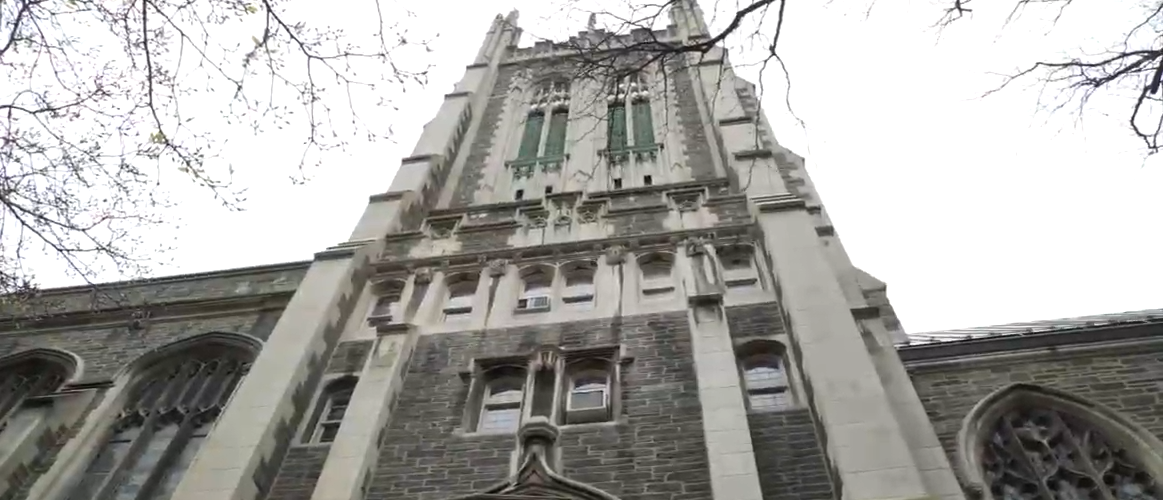The pulpit is a sign of power. It is a raised stand from which pastors preach the word of God, an ornate structure that in traditional usage elevates pastors above their congregations. From behind the pulpit, clergy lead their churches, instructing their parishioners on how to live their lives within their community.
As a Catholic kid in the 1990s, my exposure to pastors and pulpits was limited to the male priests who named truth for our community. From the pulpit each Sunday, these men would interpret Scripture, classify sins, and tell us how to live. I especially remember that they would preach about homosexuality as a sin, loudly proclaiming that the behavior of LGBTQIA persons—not the term they used—was an abomination damnable to hell by God, that LGBTQIA bodies were corrupted and different.
The teaching of these men washed over me, and I was oblivious to the power it exercised over me and my congregation until about age twelve. It was then that I began to realize that my body was one of the bodies that the priest spoke out against. I began to notice the consequences that LGBTQIA people faced by coming out. Although my own family received my coming out with love and understanding, I saw that many of my friends were kicked out of their homes and disowned by their families. These experiences showed me how the truth that the priests named from the pulpit caused hatred and division within families, and I saw that those who tried to question the priests’ truth were put in their place. They were told that the Bible clearly forbids homosexuality, and because the Bible was the infallible word of God, another truth preached from the pulpit, this was all the evidence the community needed to continue in its trajectory.
When I left the Catholic Church at the age of twenty-eight, I began attending a nondenominational Christian church, and I began to recognize a familiar pattern. What I found was that although women were allowed to preach on occasional Sundays, they received less attention from the congregation than the male pastors. I also noticed how the women who preached would often credit the male pastor for various reasons during their sermons, as if to demonstrate their credibility by way of an association with the male pastor and to thereby assist the congregation in receiving their messages. These credits or compliments would lead to applause for the male pastor, further acknowledging his presence and power within the community. The pulpit, I observed then, was a place of wavering authority, a place that reflected social hierarchies and not the hierarchies of the Spirit.
Thus, if a community has become accustomed to seeing a particular individual preaching, specifically a heterosexual man, the introduction of a woman preacher or a preacher who identifies as LGBTQIA behind the pulpit can create obstacles for that woman or LGBTQIA preacher. Because the pulpit space in churches has been occupied by heterosexual men for so long, the woman or LGBTQIA preacher is sometimes discredited and not given the same power. In these ways, representation at the pulpit is a powerful nonverbal communicator that indoctrinates a community in what to believe and who can preach.
I believe in a gospel that isn’t only for heterosexual men. It is a gospel that empowers LGBTQIA people, even behind the podium, and I believe that Jesus offers various examples of how we can begin to reimagine preaching and leadership, particularly in the context of the pulpit. Jesus occasionally taught in the synagogue, as was the norm for Jewish teachers at the time, but we find that the New Testament is also filled with examples of the Messiah preaching outside the places of religious power. His most famous sermon is not the Jerusalem Synagogue Address; it is the Sermon on the Mount. Jesus shows us that the pulpit is not a thing or a specific church space; the pulpit can be a classroom, a street, or a detention center.
While attending Union Theological Seminary, I created the short visual piece, Gender, Power, Pulpit, which attempts to illustrate the points I raise in this reflection, depicting how diverse bodies in various locations can create a pulpit space. Each of these bodies and voices can belong to a preacher; each of these locations can be a pulpit.
As a woman who is a lesbian and attending seminary, my path does not conform to the established hierarchy of an institutional church, particularly the one of my childhood. Does this mean I will never be allowed to preach? If I am following the example of Jesus, I believe it is my responsibility to preach and to preach well; it is my responsibility to help liberate people from fear, oppression, and the sins of the hateful truths that were named for their community. Wherever my feet stand, my pulpit is there, and therefore I am always preaching.
